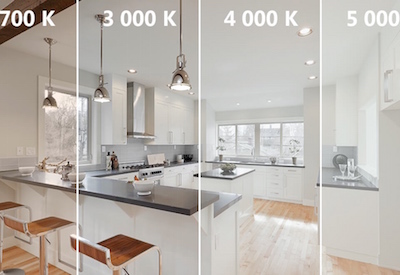Best Practices for Using PIR Sensors, Part 2

June 11, 2018
This is the second of a 2-part introductory series on passive infrared (PIR) sensors. Part 1 highlighted how PIR sensors detect motion, discussed the importance of the sensor lens, and the different types of motion that can be detected. Here in Part 2: proper sensor placement and setting accurate sensitivity levels, as well as how to reduce false triggers and sensor time-outs.
Proper placement
It is essential to take care when placing a PIR sensor. With proper placement, the sensor activates correctly, and the probability of false triggers is reduced. When considering placement, it is helpful to visualize the sensing detection pattern and think about discrete slivers of coverage keeping in mind that there are gaps in coverage. It is also beneficial to consider the range of coverage, the direction in which the occupant would typically travel in an area, and the destination of that travel; for instance, an office worker walking to their desk. The best outcome when using a PIR sensor is to place it so that a person intersects several of the coverage slivers rather than walking straight to the sensor.
There are a few best practices to follow that will help ensure a PIR sensor’s maximum effectiveness and negligible false triggers. When deciding on sensor location, keep in mind that the PIR sensor is activated by a change in temperature.
Here are a few basic tips:
• Instead of placing the sensor precisely perpendicular to the door of a room, place it on the side of the room that is diagonal to the door. In that way, when someone walks into the room, the person will break more than one beam of coverage and trigger the sensor.
• Do not place sensors too close to a room’s door, so that the sensor coverage will not extend to the hallway and be triggered by people walking in a corridor.
• Place a sensor right above the occupant’s desk to detect micro movements such as flipping a page in a book, moving a mouse, or typing on a keyboard. A common mistake is to place the sensor on the ceiling behind the monitor on an occupant’s desk. In this situation, the monitor shields the occupant’s motion and the sensor will not detect it.
• Do not place sensors over HVAC ducts as the resulting change in heat temperature may trigger the sensor.
• Do not place sensors where air blowing from an open window or door would move objects such as curtains, blinds, balloons, hanging plants, or signs in the coverage area.
• Ensure that the sensor is secured on a solid surface that doesn’t vibrate. Even small vibrations, such as those caused by the air flow from ducts, can cause the sensor to see a change in energy and elicit a false trigger.
Timeouts
Sensors have timeouts to avoid continuous alerts. Timeouts refer to how long the light is lit after it detects movement. For instance, a person walking into a room that has been unoccupied for a long time with the lights off will trigger the sensor and the lights will turn on. The sensor has a single timeout configured to determine when to indicate to the system that the room is no longer occupied. Every time a person moves in the room, the sensor resets the timeout, thereby extending the time the lights remain on. As soon as the person stops moving or leaves the room, the occupancy timer starts running until it reaches the value specified as “occupancy timeout” and then it sends the event to the system that the room is unoccupied and the lights will turn off.
The actual length of the timeout is determined by how the space is used. For example, in a restroom a longer timeout might be used so that lights do not turn off when someone is in the stall. Longer timeouts may also be used in office spaces or hallways to avoid lights continually turning on/off, which can be distracting to people in the rooms lining the hallway. The length of the timeout can be adjusted on the sensor.
Adjusting sensitivity levels
Often sensors must be tweaked to accommodate sensitivity issues. For example, vibrations in factories with large machines that generate heat may require decreasing the sensor’s sensitivity.
Less sensitivity will cover a smaller area and often result in fewer false triggers but more sensor timeouts, such as the lights turning off when you are still in a room. More sensitivity will cover a larger area and result in fewer sensor timeouts but you may have more false triggers.
Traditionally, adjustments for sensitivity have been a manual process. An electrician would need to climb up on a ladder to access the sensor, remove a panel , and then turn a screw on it to increase or decrease sensitivity. Although a simple process, it can be cumbersome to scale when deploying hundreds of sensors in a building and can require a bit of trial and error before achieving the optimal sensitivity level.
Today’s lighting control systems are moving away from traditional sensitivity adjustment methods. Leading vendors are programming sensitivity mechanisms into their software, which enable easy maintenance and more precise sensitivity modifications.
Read Part 1 here: www.electricalindustry.ca/latest-news/4272-what-are-pir-sensors-and-why-do-i-need-them










![Guide to the Canadian Electrical Code, Part 1[i] – A Road Map: Section 52 — Diagnostic imaging installations](https://electricalindustry.ca/wp-content/uploads/2022/11/Guide-CE-Code-2.png)






